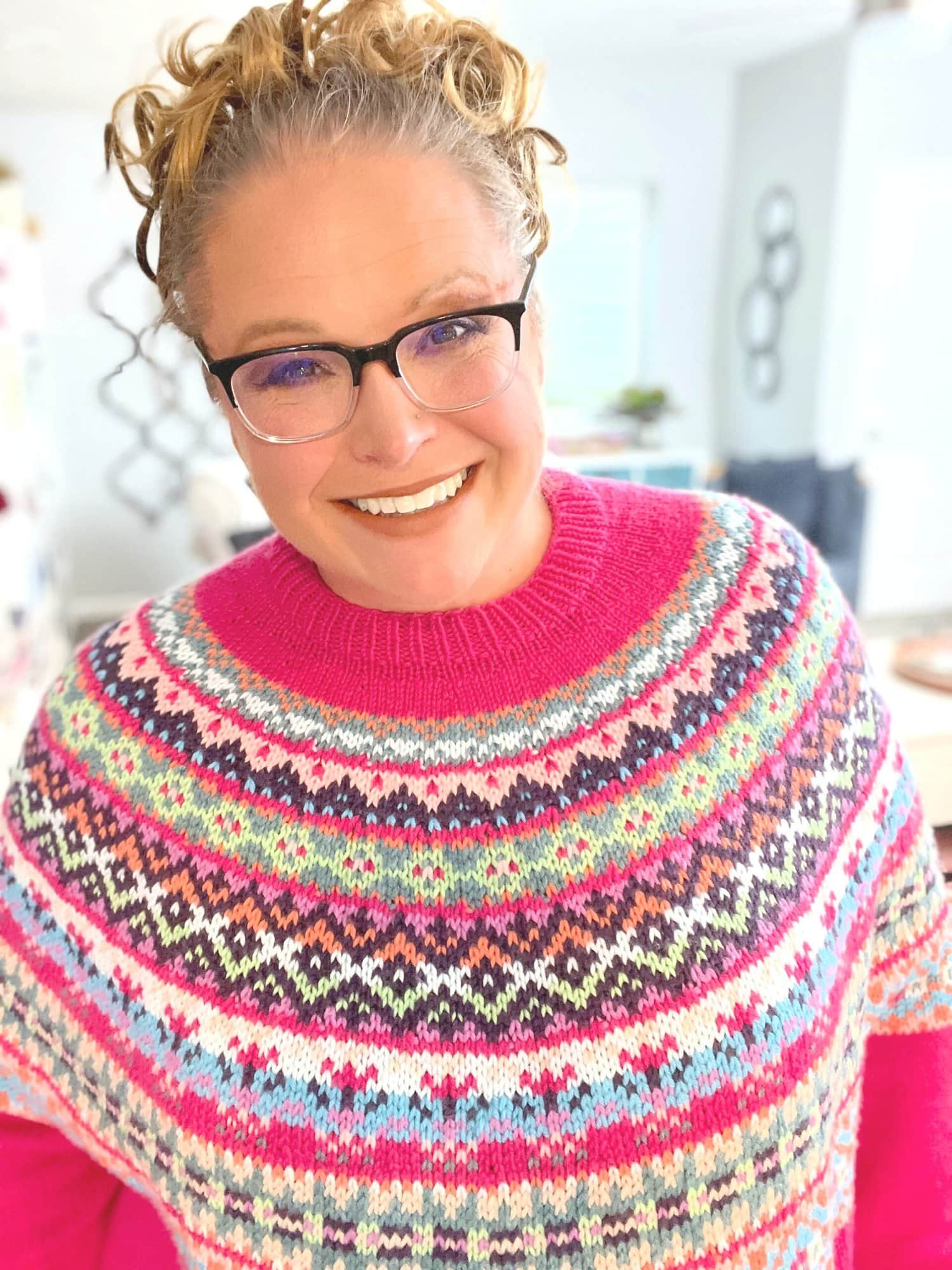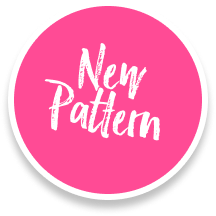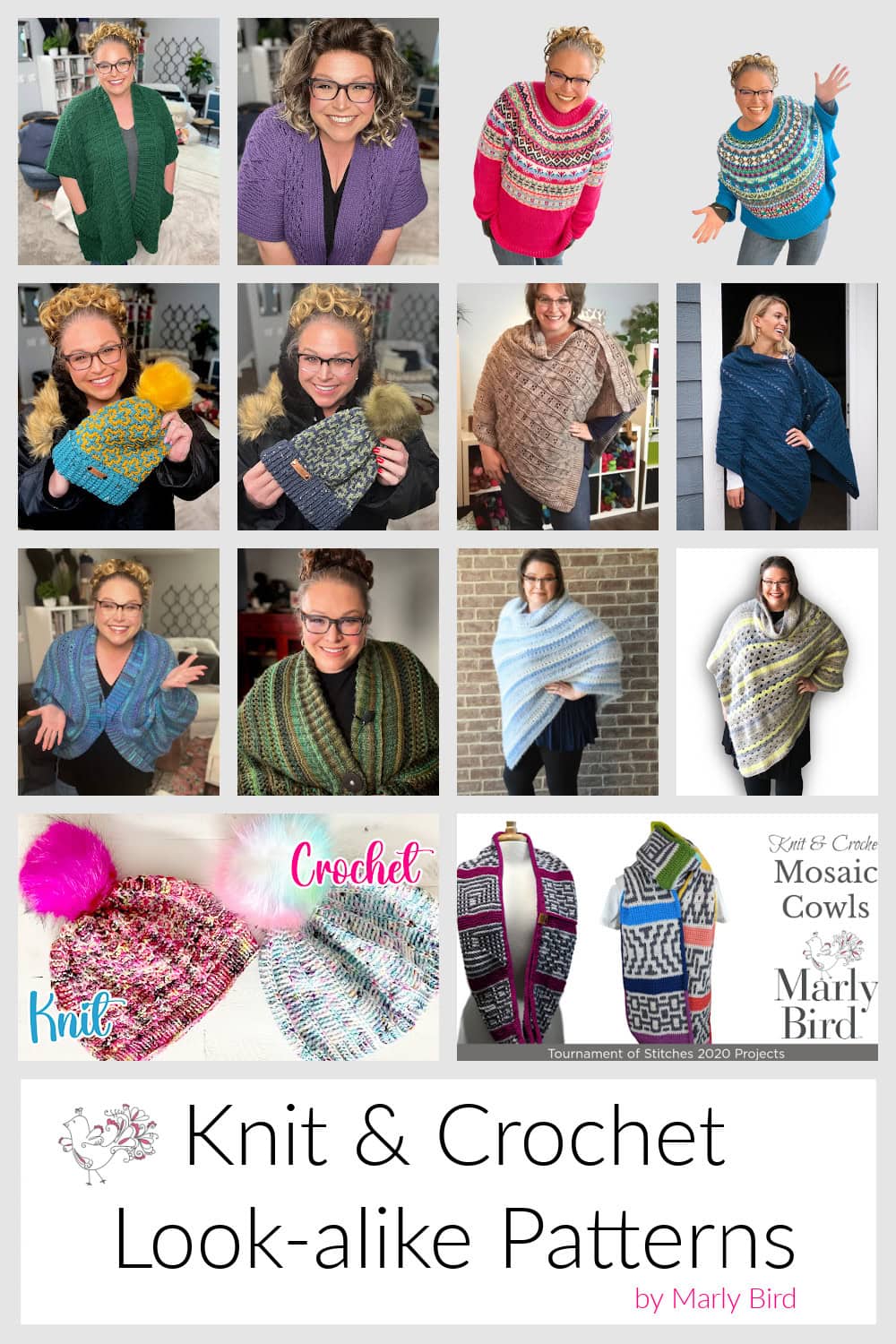Crochet Gingham Stitch And Where It Came From
If you haven’t yet seen crochet gingham stitch let me tell you a little about it. Basically, it’s an arrangement of solid color squares set out evenly across your crochet fabric. There are more rules to making a gingham fabric, and we’ll cover them in this post. But we’ll start with a little background, because this fun, simple stitch actually developed from woven gingham fabric.
I’ve been obsessed with this plaid crochet look for a while and have used it on several different patterns. Maybe you recognize some of them? Check Me Out Poncho, the Check It Out Scarf, or something less actual gingham plaid crochet and more planned pooling but I love this look too!
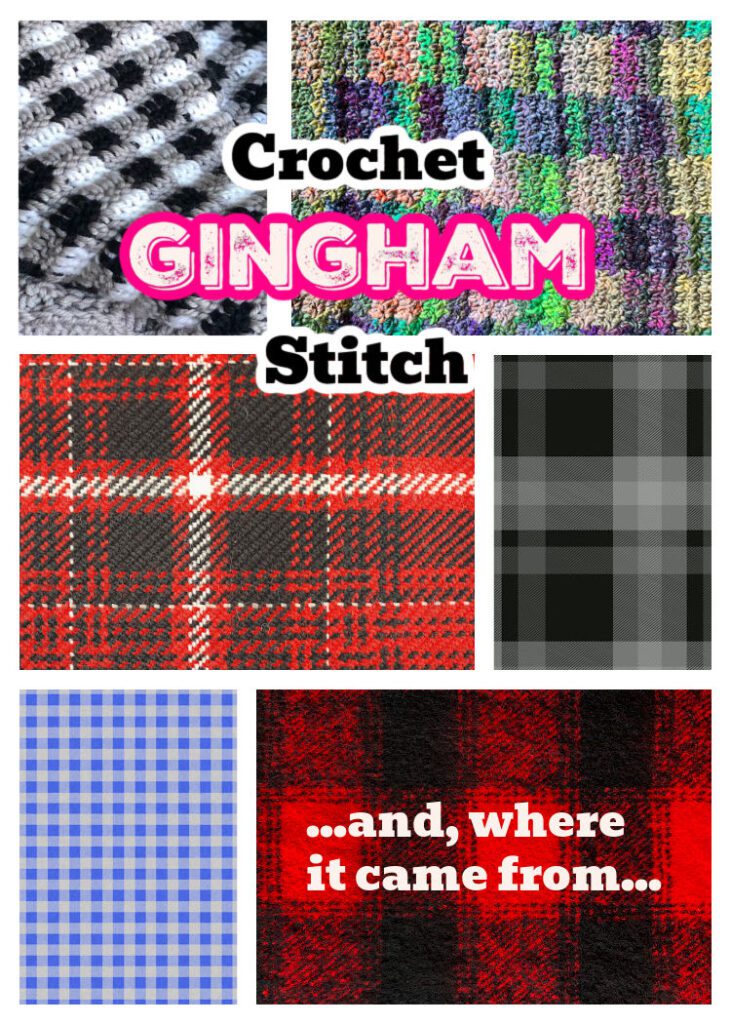
What is gingham fabric?
Gingham fabric was originally woven. It has an even warp and weft in two colors. This is weaving speak: meaning there’s the same number of strands of the same color lying along the length of the fabric as there are across the width.
What does that mean?
Let’s say you have 5 white strands, then 5 blue strands alternating across the width of your fabric. Then you work across the fabric with 5 white strands then 5 blue strands, working on the length of your fabric. Where white crosses white, you get white. When blue crosses blue, you get blue. Where white and blue cross, you get a lighter blue.
The original gingham fabric always had white as one color. Most commonly you’d see red and white, or blue and white squared fabric. Now it’s available in a rainbow of colors.
It’s a bright and summery fabric usually made in cotton or a cotton blend. It’s popular for picnics, fun western wear, and fall decorating with bows, ribbons, and more.
Why is gingham so popular?
Gingham was a very popular fabric as an easy-care cotton or cotton blend. For school uniforms in the UK, it was almost a certainty. Part of my middle school uniform was a red & white gingham dress.
It was easy to wear, comfortable, easy to care for, and always looked crisp, neat, and clean.
As with all fashion, gingham’s popularity comes in cycles, though summer and fall seem the most popular seasons for spotting this versatile fabric.
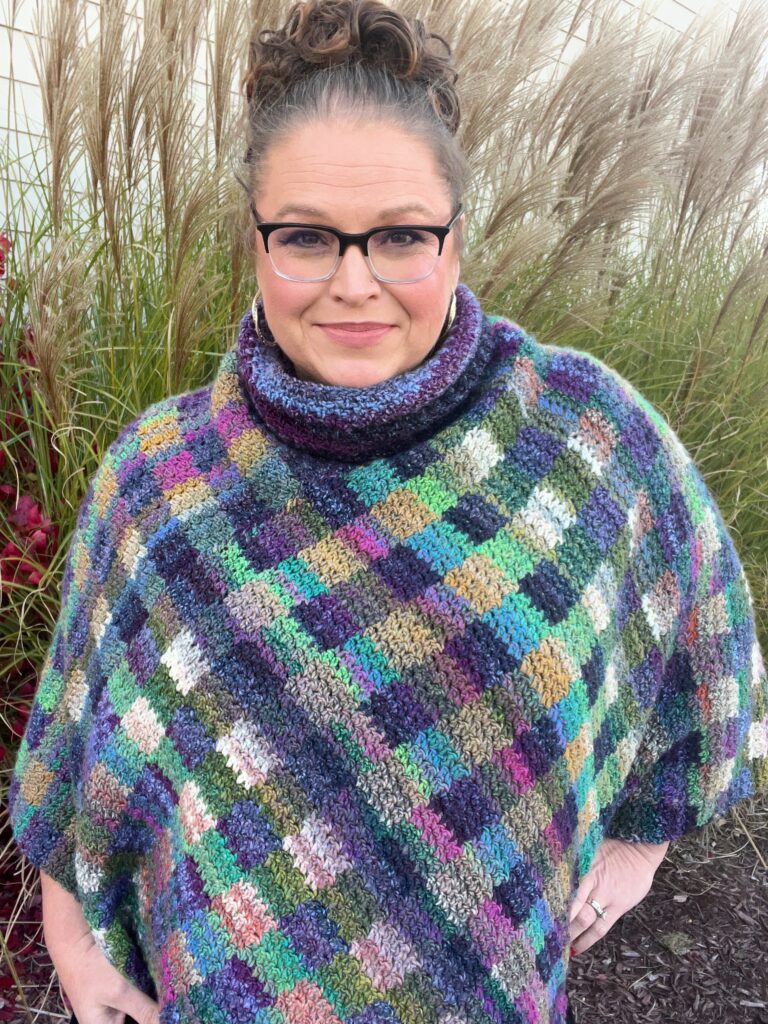
What is the difference between gingham, plaid, and tartan?
Whereas gingham has white as one of the colors, plaid has other dominant colors which are normally darker. You’ll always see gingham with regular squares. Small or large, the shapes you’ll see are always squares.
When it comes to plaid, you’ll see stripes within the fabric and there can be more than two colors, especially if you think about tartans.
The colored lines in tartan are planned as squares, and the vertical and horizontal lines are repeated exactly throughout the fabric. But the way the colors play together can sometimes show more as rectangles and stripes.
Tartan is a form of plaid, made popular by the clans in Scotland, but not all plaids are tartans.
So what about checks? Aren’t they squares too?
What is the difference between checks and plaids?
The terms check and plaid are often used interchangeably, but that shouldn’t really be so. Checks are even and symmetrical most commonly using only two colors.
With plaids, the vertical stripes don’t necessarily have to match the horizontal stripes, which means they don’t always look even or perfectly symmetrical.
We’ve all seen the buffalo check. This pattern was made popular by the lumberjack look in red and black. Checks can come in any color combination, but the buffalo check is usually a color together with black.
Light or dark doesn’t really matter with checks, but tartans for Scottish clans have very precise colorways.
But, when you’re working crochet gingham stitch the choice is all yours and yours alone.
So, let’s get back to gingham and crochet…
What is crochet gingham stitch?
The actual stitch pattern can be a simple single or half double crochet, but working in griddle stitch gives it a little bit more texture, which looks absolutely amazing!
You work griddle stitch by alternating single crochet and double crochet stitches. Then, on the return row, you single crochet in each double crochet and double crochet in each single crochet. This effectively scrunches up each double crochet giving that little bit of texture I just mentioned.
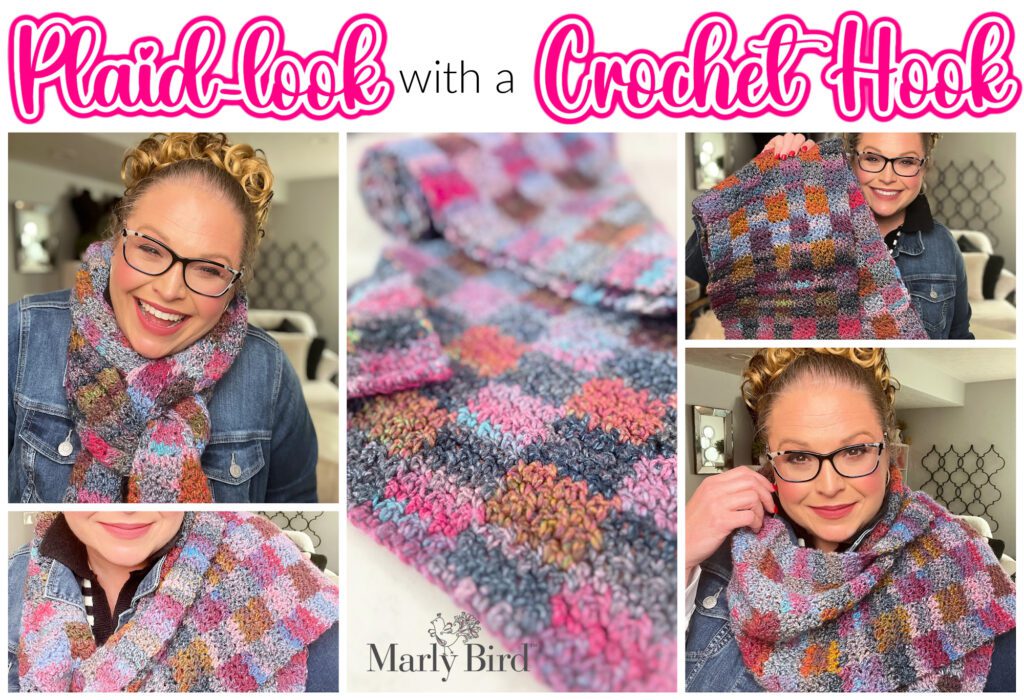
But what about the crochet gingham stitch look?
The crochet gingham stitch isn’t really about the stitch pattern, but more about the colors. This is where you can really have some fun!
Of course, the colors you use amplify the squared gingham effect. And because you’re not weaving the fabric, but crocheting your gingham look, you’ll need three complementary colors for the original look. White, a mid-color shade, and a darker shade of the same color will give you that perfect gingham.
You’ll be using only two colors in one row (let’s say white and light blue. Work a certain number of stitches in white then change to light blue, carrying your unused yarn along the top of the row you’re working into and working over that yarn, hiding it with your stitches. You’ll continue until you’ve worked to the same height as the width of each color panel (so you have squares in each color).
Once you finish that stripe, you’ll switch colors and work light blue on the white, and blue on the light blue. Again, you’ll work to the same height as the width of each color panel (so you again have squares in each color).
Then, you’ll go back to your first panel colors and keep changing after every stripe as needed. You’ll soon see the pattern forming so you’ll know what’s coming next.
Tips for success with crochet gingham stitch:
- Don’t pull your carried yarn too tight, as you’ll pucker your fabric.
- Don’t leave your carried yarn too loose, or your extra yarn will stick out between stitches as little loops.
To remedy both of these problems:
- Work X number of stitches.
- Before you change colors again, check the stitches you just worked.
- If it’s too narrow and puckering – release your yarns, and give your work a little tug to even the edges and loosen the pulled yarn.
- If you have your contrast yarn color sticking out, gently pull on your non-working yarn until you don’t see that color between the stitches.
- Be careful not to pull too tight when beginning your next color.
Now you know about checks, plaid, tartan, gingham, and crochet gingham stitch.
Look out for more of this technique coming soon. You’re going to LOVE it!!!
In the meantime, check out these patterns (some use the gingham crochet technique) and give it a try.
Free plaid patterns to crochet and knit
Free check and block crochet and knitting patterns
And, look up planned pooling! Plaid on the diagonal! How cool is that?
Here’s a few more patterns to check out…

Gingham Crochet Christmas Stocking
Gingham Corner to Corner Blanket
Happy crocheting!
Categories: Crochet, Tips, Tricks, Techniques for Knitting and Crochet








